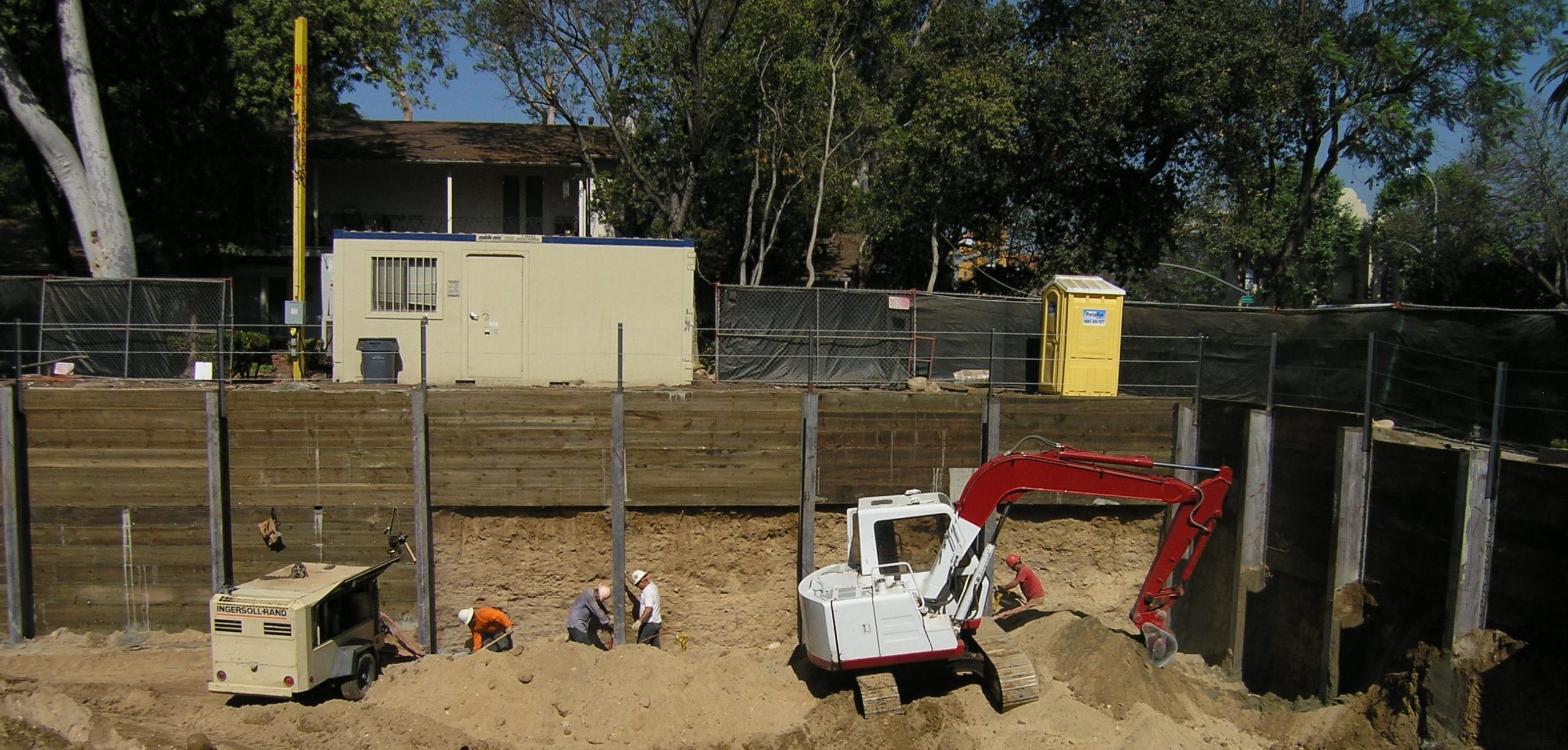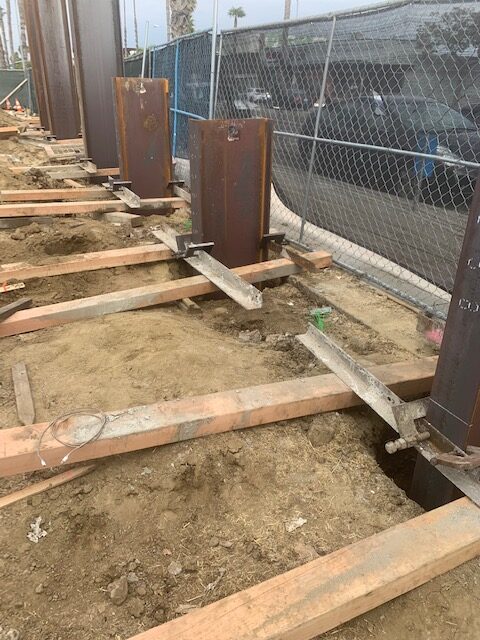Soldier Pile Installation
Soldier piles may be driven or they may be installed in drilled holes. Drilled holes may be backfilled with concrete, slurry, sand, pea-gravel or similar material after the soldier pile has been installed in the hole. Some soldier pile drilled holes are backfilled with concrete to the depth of excavation and then the remainder of the hole is filled with slurry to ground level. Slurry is generally considered to be a sand-cement mix placed wet enough to fill all voids. Backfill materials other than concrete are used when it is desirable to extract the soldier piles. When materials other than concrete are used to backfill drilled soldier pile holes some vibratory methods and/or jetting procedures need to be used. The backfill should be as compact as the native soil into which the pile is set.
The use of pea gravel backfill in lieu of concrete substantially decreases the passive resistance on all sides of the soldier pile. The pea gravel does not permit the soldier pile to act as a unit until sufficient soldier pile deflection compacts the pea gravel against the soil. Similar reasoning is true for compacted sand backfill.
Soldier piles offer a number of advantages over conventional retaining wall and soil stabilization approaches, including:
Soldier Pile System
The soldier pile system is a support technique to limit the horizontal movement of the soil, structures and utilities that may exist behind the wall to safe practical limits. These Piles are wide flange steel H section piles that are vertically driven or drilled into the earth at regular intervals (usually between 6 and 12 feet) prior to excavation. Soldier piles can be designed as cantilever systems up to a cut height of roughly 12′. If increased stability is required, or a deeper excavation, then tiebacks can be grouted and drilled into the retained material.
Soldier Piles have been used in a variety of conditions including slope stabilization, earth retention, and remediation. Moment resistance in soldier pile and lagging walls is provided solely by the soldier piles. Passive soil resistance is obtained by embedding the soldier piles beneath the excavation grade.
Soldier Pile Installation



